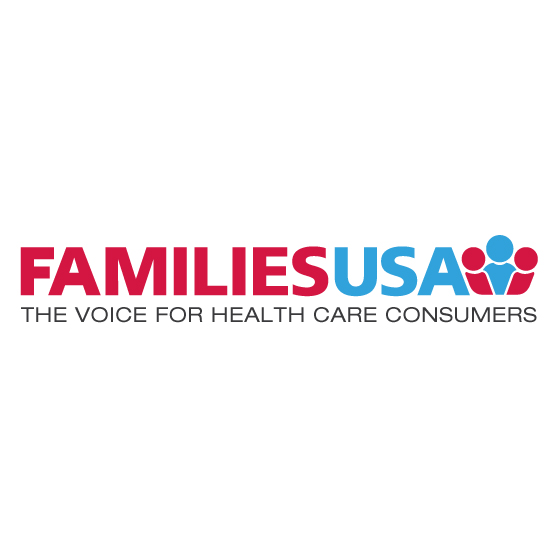Why States Should Offer Extensive Oral Health Benefits to Adults Covered by Medicaid
02.07.2017
Millions of adults lack coverage for oral health care and cannot afford to pay for needed care on their own. States can make a difference by covering extensive oral health benefits in their Medicaid programs. By doing so, they can save money in emergency care, address chronic disease and the dangerous spread of disease from the mouth to other parts of the body, help people preserve their teeth into old age, and improve adults’ job prospects.
According to two former U.S. Surgeon Generals, oral disease is a silent epidemic affecting some of our most vulnerable citizens. Providing oral health care to people throughout their lives improves individuals’ economic well-being as well as their overall physical and psychological health.1
However, millions of low-income adults lack coverage for oral health care and cannot afford it. Your state can make a difference by joining 16 other states that now provide adults covered by Medicaid with extensive oral health benefits.2
Top reasons your state should offer extensive oral health care to adults covered by Medicaid:
-
Adding comprehensive oral health benefits to Medicaid can be cost-effective for state budgets.
In 2016, the American Dental Association estimated that adding an extensive Medicaid dental benefit would increase a state’s Medicaid spending by only 0.4 to 2.1 percent.3 By adding this benefit, your state’s low-income population will experience fewer oral health-related emergency visits, better manage their chronic diseases, and more easily get jobs.
-
Without dental coverage, low-income adults face major barriers to getting oral care.
A quarter of low-income adults report that in the last 12 months, they did not get needed dental care due to the cost.4 This lack of regular care causes problems throughout their lives. Low-income adults are more than twice as likely to have untreated dental caries (the bacterial disease that causes cavities) as higher-income adults5, more than 20 percent have unfilled cavities and more than half of low-income older adults are missing six or more of their teeth.6
-
Your state can save money in emergency care.
People with severe pain from oral health conditions often end up in emergency rooms, where they get drugs for their pain (such as opioids) and antibiotics rather than complete care. This is costly and ineffective. Studies show that ER-related dental visits significantly increase when states eliminate Medicaid dental coverage during tough budget years.7 In 2012, emergency dental visits cost the U.S. health care system $1.6 billion. The American Dental Association estimates that up to 79 percent of emergency department dental visits could be diverted to community settings, saving about 48 percent of the cost of each visit (for example, treating a dental emergency might cost $750 in an ER vs. $390 in the community setting.)8
-
Your state can save money for people with chronic diseases.
Four recent studies have analyzed the insurance claims of people with chronic diseases linked to oral health, such as diabetes, congestive heart failure, asthma, COPD, coronary artery disease, and chronic kidney or renal disease. All four studies found that overall medical costs were lower for people who received periodontal treatment and cleanings.9
-
States that cover oral health care in their Medicaid programs see a difference.
Data from Oregon showed that Medicaid enrollees with comprehensive dental benefits are three times more likely to get their dental needs met and much more likely to get annual dental checkups than low-income people without dental benefits.10 A recent state report card shows that states that do not provide regular and comprehensive dental care through their Medicaid programs include those with the highest rates of complete tooth loss among the elderly.11
-
Untreated oral health conditions cause other diseases and even death.
About as many people die of oral cancer each year as die of skin cancer or cervical cancer.12 Without regular access to dental care, this oral cancer often goes undetected until it is too late.Bacteria from untreated oral abscesses can spread to the brain or the heart, causing death.13
Poor oral health of pregnant women is linked to risks such as pre-term birth, low birth weight, and pre-eclampsia.14
-
The mouth is the gateway to the body and one of the first indicators of health.
Research shows that diseases such as diabetes, leukemia, HIV/AIDS, some cancers, heart disease, and kidney disease have oral manifestations. Besides causing pain and difficulty eating, poor oral health can lead to problems with the heart and other organs.
-
Oral health care helps people save their teeth and continue to eat well as they get older.
Among people 65 and older with incomes under $15,000, nearly three out of five people have lost six or more of their teeth. More than one in four have lost all of their teeth due to decay or gum diseases. Unable to chew properly, many elderly people can’t eat fruits and vegetables, and many are on soft diets—but soft food can cling to the gums and remaining teeth, further aggravating problems.15
-
Poor oral health makes it hard to get jobs.
It is common knowledge that people should smile in job interviews and that employers are less likely to hire people with missing teeth, especially for jobs that entail interacting with the public.16 Yet many low-income adults have missing or damaged teeth. More than one-fourth (29 percent) of low-income adults report that the appearance of their mouth and teeth affects their ability to interview for a job.17 Low-income adults are twice as likely to have this problem as higher-income adults. Employers may fear that employees with dental problems will miss work days or be less productive. In fact, in FY 2008, more than half of U.S. Army recruits were classified as non-deployable unless they got treatment for urgent dental conditions that would likely cause a dental emergency within 12 months!18
Your state should provide extensive oral health care to adults covered through Medicaid because it is cost-effective, eliminates excruciating and unnecessary mouth pain, increases the likelihood of catching disease before it worsens, improves people’s ability to eat and follow good nutrition, helps adults get jobs, and improves not only oral health but overall health.
Support for this fact sheet was provided by a grant from the DentaQuest Foundation.
Endnotes
1U.S. Department of Health and Human Services. Oral Health in America: A Report of the Surgeon General Rockville: MD, U.S. Department of Health and Human Services, National Institute of Dental and Craniofacial Research, National Institutes of Health, 2000 and V. Murthy, “Oral Health in America, 2000 to Present: Progress Made But Challenges Remain,” Public Health Reports, March 2016.
2AK, CA, CT, IA, MA, MT, NJ, NM, NY, NC, ND, OH, OR, RI, WA, and WI provide preventive, diagnostic, and restorative services to aged, blind and disabled adults with no per person cap of less than $1000; among these, AK, CA, CT, IA, MA, MT, NJ, NM, NY, OH, OR, RI, and WA also provide care to the Medicaid expansion population.
3C. Yarbrough, M. Vujicic, K. Nasseh, Estimating the cost of introducing a Medicaid adult dental benefit in 22 states, (Chicago: American Dental Association Health Policy Institute, March 2016), available at http://www.ada.org/~/media/ADA/Science%20and%20Research/HPI/Files/HPIBrief_0316_1.ashx.
4Marko Vujici, Thomas Buchmuller, and Rachel Klein, “Dental Care Presents the Highest Level of Financial Barriers, Compared to Other Types of Health Care Services,” Health Affairs 35, no. 12 (December 2016): 2176-2182.
5Kaiser Family Foundation analysis of 2011-2012 National Health and Nutrition Survey for populations below poverty and above 200 percent of poverty, in “Access to Dental Care in Medicaid: Spotlight on Nonelderly Adults,” (DC: Kaiser Family Foundation, 2016) available at http://kff.org/medicaid/issue-brief/access-to-dental-care-in-medicaid-spotlight-on-nonelderly-adults/.
6Judith Jones, DDS, Boston University, Analysis of data from 2014 Behavioral Risk Factor Surveillance System data, presentation, “Oral Health Inequality in American Older Adults”, Santa Fe Group, 2016.
7California Health Care Foundation, Eliminating adult dental benefits in Medi-Cal: an analysis of the impact, 2011 and Cohen et al, “Does the elimination of Medicaid reimbursement affect the frequency of emergency department dental visits?” Journal of American Dental Association, 1996, cited in Medicaid and CHIP Payment and Access Commission, “Medicaid Coverage of Dental Benefits for Adults,” Report to Congress on Medicaid and CHIP, June 2015 available on https://www.macpac.gov/wp-content/uploads/2015/06/Medicaid-Coverage-of-Dental-Benefits-for-Adults.pdf.
8T. Wall and M. Vujicic, Emergency Department Visits for Dental Conditions Fell in 2013, Chicago: ADA Health Policy Institute, February 2016, available at http://www.ada.org/~/media/ADA/Science%20and%20Research/HPI/Files/HPIBrief_0216_1.ashx.
9M.K. Jeffcoat, et al “Impact of Periodontal Therapy on General Health: Evidence from Insurance Data for Five Systemic Conditions.” American Journal of Preventive Medicine 47(2)(2014):166–74; A. Marano, et al, Appropriate Periodontal Therapy Associated With Lower Medical Utilization And Costs. Bloomfield, CT: Cigna, 2013; UnitedHealthcare, Medical Dental Integration Study, 2013, available at www.uhc.com/content/dam/uhcdotcom/en/Private%20Label%20Administrators/100-12683%20Bridge2Health_Study_Dental_Final.pdf; Nasseh, Vujicic and Glick, “The Relationship between Periodontal Interventions and Healthcare Costs and Utilization,” Health Economics, January 22, 2016.
10Sarah Katz (citing Wallace study), “The Individual and Program Impacts of Eliminating Medicaid Dental Benefits in the Oregon Health Plan,” NJ: Robert Wood Johnson Foundation, 2011.
11Oral Health America, State of Decay, April 2016, available on http://b.3cdn.net/teeth/492f646d03c892b6aa_l6m6bj3ql.pdf.
12American Cancer Society, Cancer Facts and Figures, 2015, available on file:///C:/Users/Parcham/Downloads/Us_Cancer_Facts.pdf; also see oralcancerfoundation.org/facts/.
13See, for example, Mary Otto, “For Want of a Dentist,” Washington Post, 2007; “North Bay Nursing Home Blamed for Woman’s Death,” NBC (TV)11, San Francisco Bay Ae, July 6, 2007.
14Children’s Dental Health Project, Fact Sheet: The Oral Health of Pregnant Women, available on https://s3.amazonaws.com/cdhp/Perinatal+Fact+Sheet_12-3-15.pdf.
15Judith Jones, DDS, Boston University, Analysis of data from 2014 Behavioral Risk Factor Surveillance System data, presentation, “Oral Health Inequality in American Older Adults”, Santa Fe Group, 2016, and Oral Health America, op cit.
16Jonel Alecccia, “Bad Teeth, broken dreams: Lack of dental care keeps many out of jobs,” NBC News, June 12, 2013; Hyde et al, “Welfare Dental Intervention Improves Employment and Quality of Life,” Journal of Dental Research 85 no.1 (January 2006):79-84.
17ADA Health Policy Institute, Oral Health and Well-Being in the United States, 2016, available on http://www.ada.org/en/science-research/health-policy-institute/oral-health-and-well-being.
18David Moss, “The 2008 Army Recruit Oral Health Survey Results,” US Army Medical Department Journal, January-March, 2011: 62-67.



